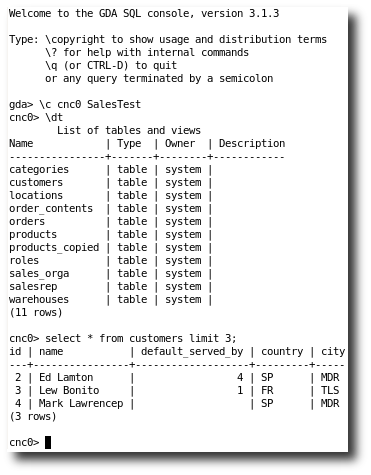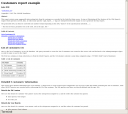Having used PostgreSQL’s psql console tool a lot in the past, I got used to its very good features (short commands to display info such as \dt, paged output when it contains more lines than current terminal size, (basic) HTML output for quick reports,…)
Those features are not always available in the SQL console of the other DBMS systems I’ve come to use, so I decided some time ago to write a new SQL console using Libgda, and it’s now useable with some nice features:
- partial implementation of some of the PostgreSQL’s psql SQL console (some short commands, paged output, HTML export mode,…)
- multiple simultaneous connections (with the possibility to change the current connection used to issue SQL commands)
- possibility to bind several connections into one and issue cross-connection SQL statements (for example a SELECT using tables from 2 different connections)
- support for all the DBMS types supported by Libgda
Here is a sample session (where a connection named cnc0 is opened to the SalesTest defined data source):






